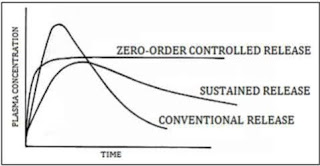Body fluid compartments
Body fluid compartments
By
Dr. Gouse Mohiddin Shaik
• Most abundant substance present in our body is “water”
• About 60% of healthy human body weight is water
• Water is distributed in different compartments of our body
• Intracellular fluid compartment
• Is the fluid compartment of the body consisting of all the water present within the cell
• Water is present out of the cells is called extracellular fluid
• Non-circulatory water present around the cells is called intersterial fluid
• Circulatory water in the blood is present as plasma
Intracellular fluid Extracellular fluid
40 % Dry weight 60% total body water
Innate immunity
• Intracellular fluid
• Rich in potassium (K) and magnesium (Mg)
• Rich in proteins
• Extracellular fluid
• Rich in sodium (Na)
• Rich in Chlorine (Cl)
• Plasma
• Rich in sodium (Na)
• Rich in proteins
Intracellular fluid Extracellular fluid
Na Na
• Interstetial fluid and plasma are divided by capillary membrane which is permeable to Salts
(NaCl) but not proteins
• But cell membrane between extracellular and intracellular fluid is not permeable to Salts but permeable to water
• At steadystate osmotic pressure between int.fluid and ext.fluid is constant ( nearly 300 mosl/lit)
• Osmolarity of pure water is zero (0)
• Changes in concentrations of osmotically active solute particles effect the equilibrium
• Water shift happens to towards the compartment of high osmolarity
• Volumes of compartments change accordingly
• Volume of ext.fluid compartment mainly depends on osmatically acitive solute particles
• Concentration of osmotically active particles in a solution are expressed in osmolarity of that solution. (mosl/lit)
• Osmolarity is osmotcally active particles
/ lit.
• Osmolality is osmotically active particles / kg
• For water osmolarity and osmolality are same (1lit of water = 1kg of water)
Steady state
Isotonic volume contraction
Isotonic volume expansion
Hypotonic volume contraction
Hypotonic volume expansion
Steady state
Steady state
Hypertonic volume contraction
Hypertonic volume expansion
ISOTONIC HYPOTONIC HYPERTONIC
Contraction - Diarrhea - Vomiting
- Loss of blood - Loss of Na+ - Adisons disease - Adrenal insufficiency -Too much sweat - High grade fever -Diabetes insipidus
Expansion - giving normal saline -Too much
waer intake
- Antidiruretics - Salt ingestion
Next class….
• Sample collection and management



Comments
Post a Comment
Thanks